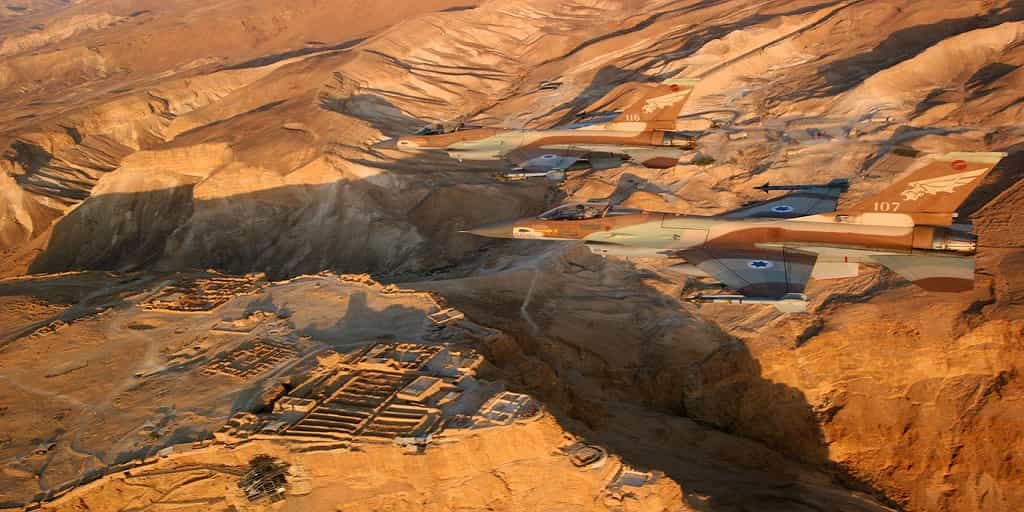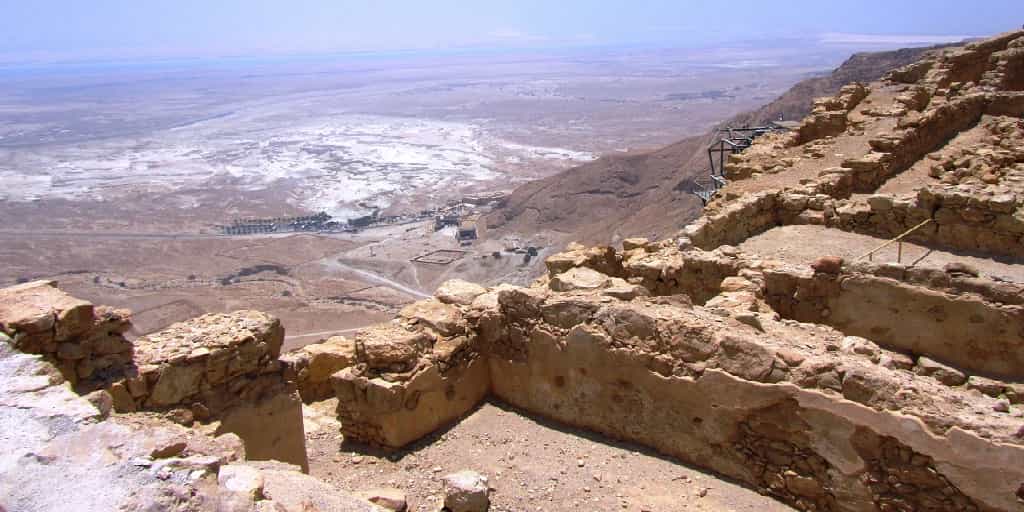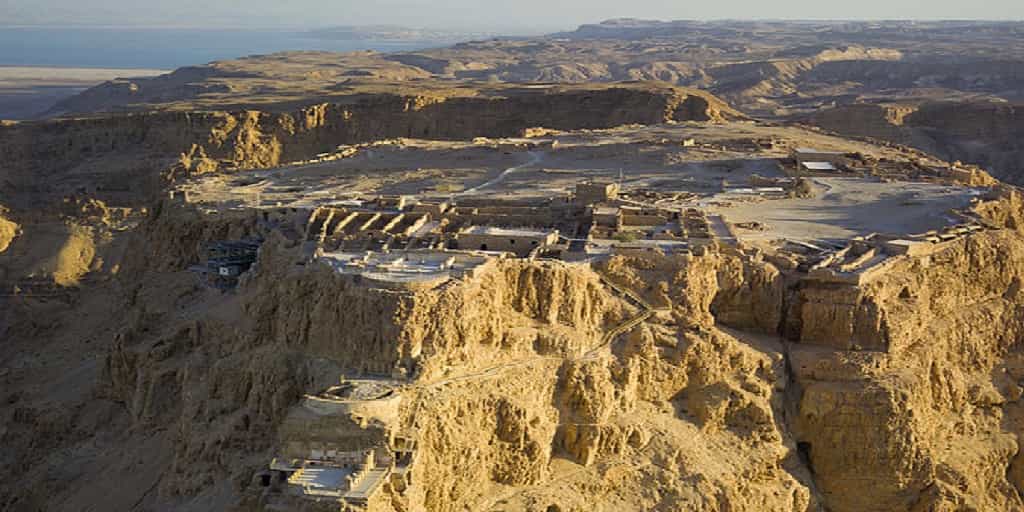The story of Masada is a unique story that raises a lot of questions for us today. But there is much more to the story than many of us might know. The Jewish Zealots built up the fortress before the battle with the Romans. There are paths leading up to the top that many aren’t aware of. So let’s explore this multi-layered place that poses so many questions for us to learn from! Let’s get started.
The Development of a Fortress on a Plateau
There were three periods of development of the fortress at Masada before the Jewish Zealots arrived.
1. The Hasmonean- Maccabean Family
Who are the Hasmoneans? Well, remember Hanukkah, the holiday where there is oil only to last a short time but it lasts eight days? The holiday where there was a small Jewish army defeats the Greek army? If you don’t remember, you can always read my Hanukkah Blog.
What happens after the holiday is that the Maccabean family takes over as the ruling class. They will be both the High Priests and the King.
But what does this have to do with the story of Masada?
According to Roman Period Jewish historian Josephus, King Yonatan built up Masada as a fortress. Who was Yonatan? It could have been either Judah’s brother or Alexander Yanai, being referred to by his Hebrew name.
There were no walls, etc., but Josephus mentioned in his works that after battles between Mattityahu and Oreas the Hasmoneans fortified the site where Mattityahu’s mother was thrown from a chariot.
After not getting assistance from the Nabateans living in the Negev, the family continued to Mezad outpost, creating the beginning of what we know as Masada.
Before Romans take over by placing Herod in power, two palaces will be built by the Hasmoneans, one of them on Masada.
There are several remains we can see at Masada from the Hasmonean Period:
• Coins,
• Cisterns for storing water,
• And the palace.
2. King Herod
When Herod took over the land, he fortified the palace and other parts of the fortress primarily on the north side of the plateau. He left the plain for agricultural needs in case of conquest.
While King Herod invested all this work on the fortress, there is no proof he lived here at all.

Now before continuing the third part, we must remember there is no connection between Herod and the Great Revolt.
3. Roman Governors over Judea
After Herod died in the year 4 CE, Roman governors controlled the area. The fortress at Masada was a winter palace for these governors. This is the Masada Josephus will describe as a slave historian to the Romans. When the governor was not here, staff would stay here to maintain it as if the governor was coming the very next moment, fully equipped with fresh water, fresh food, etc. Imagine keeping it all fresh at 107.6 degrees Fahrenheit.
The Story and Myth of Masada
So what’s the story of Masada? In the first century CE the Romans were controlling this land with a tight fist. The residents of the Empire had to live like Romans. By 66 CC the Jewish population had had enough, and began a revolt against the Romans. But the Jewish forces are no match for the Roman army. By 70 CE the Second Temple is destroyed, the Jewish population was spread throughout the Roman Empire, and Judaism left to answer questions of how to move forward.
A group of 1,000 Jews who survived the fight against the Romans came up to Masada. They believed they were the last Jews in the world. They fortified the fortress and were the last outpost the Romans had to defeat in order to fully squash the revolt.
The Zealots will live in the space between the walls and the entrance ways. Why? They are fighting against the elitist, Roman- influenced controlling class. They will, therefore, build a new neighborhood with mikve’ot (purity baths), and a synagogue.
Once the Jewish Zealots established their fortress, the Romans arrive and besiege the fortress. They established eight camps around the base of the plateau. The Romans than began to build a ramp up Masada, and as they got closer the Jewish Zealots made a decision.
They knew that if the Romans made it up Masada, the Romans would either kill or enslave them (and force them to assimilate into Roman culture).Their decision was how they wanted to end this story. Don’t forget, they truly believed that they were the last Jews in the world. There were no other Jews but them.
How would the chapter of the world’s Jews end? Would they be enslaved and assimilated into other cultures? Would they be massacred by the Romans?
Their answer was none of the above. The Jewish Zealots decided that Jews would not go down in history as a people who gave up or give in. They would kill themselves, so when the Romans finish their ramp and climb up, there would be no battle for them to fight. The Jews would decide their own fate.
Upon making this decision, the men of each family killed his family. Ten men were than chosen to kill the rest of the men and one another, leaving only one man to have to kill himself. Who was that man, leader of the Zealots and sole person to kill himself on Masada? Elazar ben Yair.
His final speech to the people was a powerful one:
“Since we long ago resolved never to be servants to the Romans, or to any other than to G-d himself, Who alone is the true and just Lord of mankind, the time is now come that obliges us to make that resolution true in practice…We were the very first that revolted, and we are the last to fight against them; and I cannot but esteem it as a favor that G-d has granted us, that it is still in our power to die bravely, and in a state of freedom.”
When the Romans make it up to the top of Masada, they see the fortress burned, and the Zealots dead.
What you will see on a trip to Masada

Only the northern end of Masada is really built up (because of Herod as I mentioned before). However, the Visitors Resort, or guest house, was separate from the King’s area. We can see remains from both of these buildings. From the King’s Palace we can see a window into King Herod’s vanity.
Twenty- seven towers are stationed along the casemate wall. What is a casemate wall? It is a wall actually made up of two separate walls with a space in between.
The northern wall separates the royal part of the fortress from the rest of it. Now what is important when we see this, is that this is what the Zealots were rebelling against: the royalty, the vanity, the forgotten Jewish way of life. We will see that instead of living in the palace, or finer parts of the fortress, they will set up camp in the doorways!
There is yet a third wall with glassi (inclining defensive wall) around Herod’s Palace. The palace had three stories:
1.) The dorms or sleeping area
2.) The library and dining room
3.) The private palace with a bathhouse and balcony.
We can see the remains of part of these stories as well as the artificial, pointed platform.
The storage rooms, that used to store the food and supplies. It was because these storage rooms that Zealots were able to last as long they could.
The Roman bathhouse – we can see the corridor bathhouse next to the palace. These kinds of institutions were part of what the Zealot were revolting against.
The Synagogue- the synagogue was originally stables. The first pillars to the wall served as a partition. Four columns closed off the wall.
The South Echo Balcony- from this balcony we can see two of the Roman camps below. Also from here, if you shout you can here an echo come back. It is a great place to wrap up the story of Masada.
Questions and Implications of the Story of Masada
When we talk about the implications of the story of Masada, we have to remember when we begin to talk about the implications of this story is that no one was watching them. They could do whatever they wanted. The Zealots chose to live a Jewish life while stuck on a plateau in the middle of the desert. They chose to build a mikve and synagogue. They chose to kill themselves so not to fall as slaves to the Romans.
Their decision to die as free Jews rather than live as enslaved ones sends a strong message to us today. What would you do if you believed to your core that you were the last Jew, Christian, Muslim man, woman, human being in the world, and someone else was coming to enslave you, make you live a miserable life, or better yet, kill you?
Would you allow them to enslave you? What do you want your legacy to be? How do you want to remembered? When we take a moment to think about this way, it becomes a little understandable why they killed themselves.
Actually…the heads of each family killed their families. Ten appointed men killed the men. And the ten men killed each other, leaving only one person to kill himself. Therefore, only one person committed suicide.
How could they kill themselves when it is against the laws of Judaism? Jewish Law permits three situations for committing suicide. One of those situations is when someone has committed against G-d.
One final message many have taken from the story of Masada is one of heroism. The Jewish Zealots stood up for what they believed in. They fought back, and stuck it out until the end. They didn’t just sign some petition and then forgot the problem existed. The Zealots sat down, found their values, and stuck by them until the last moment possible.

And when the time came to decide their fate and legacy they chose something that is hard for many of us to understand, but they chose to do something that was incredibly clear and powerful.
Today, we don’t always see people sticking to their values with so much conviction. And because of that, this story can be inspiring.
To go on a trip exploring the story of Masada (and the Dead Sea), check out Samantha Israel Tours’ Masada and Dead Sea trip. And while you’re at it, plan a trip!





